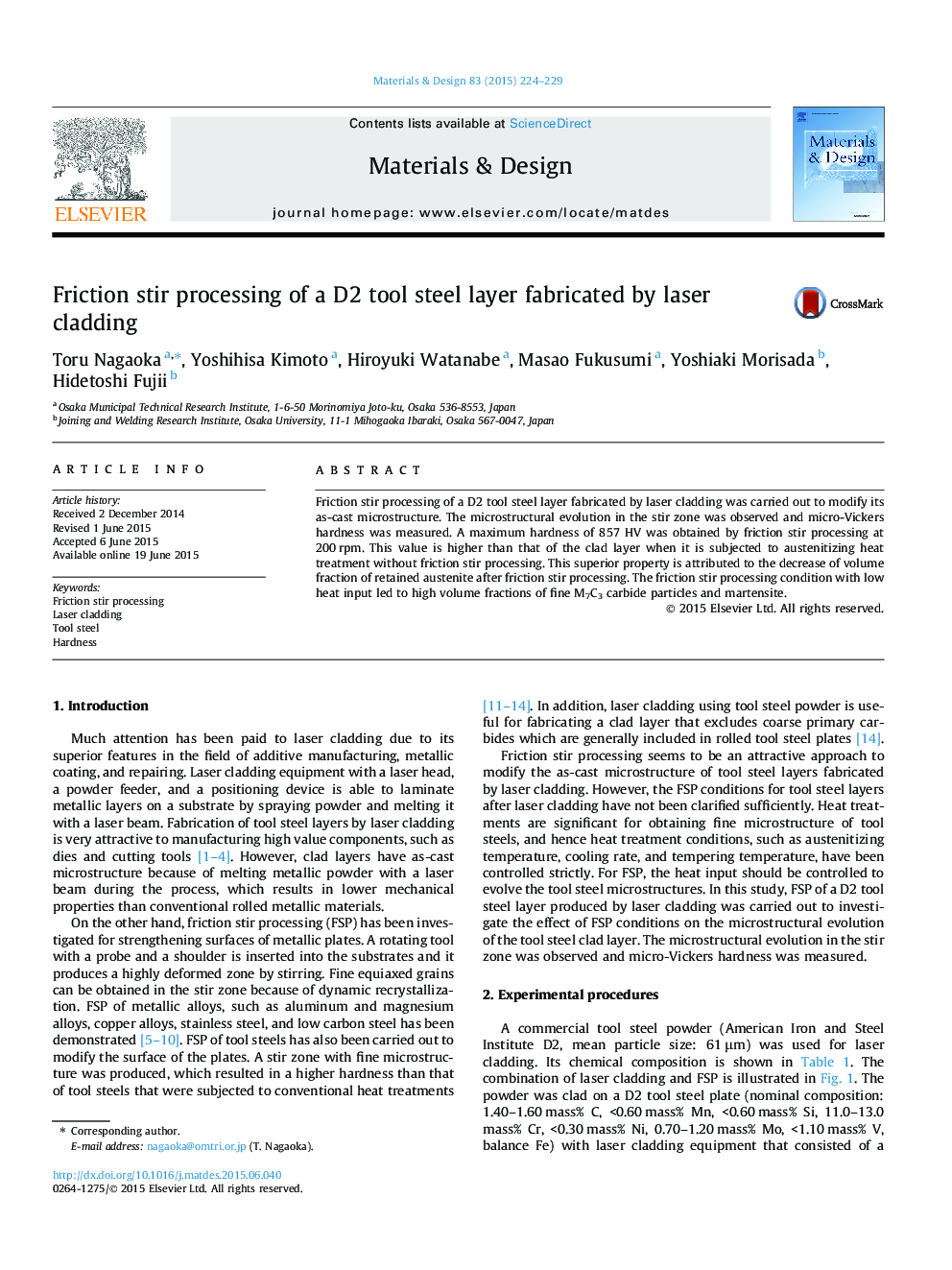| Article ID | Journal | Published Year | Pages | File Type |
|---|---|---|---|---|
| 828430 | Materials & Design | 2015 | 6 Pages |
•Carbide particles precipitated in the interdendritic region during laser cladding.•Friction stir processing modified the microstructure of a D2 tool steel clad layer.•Friction stir processing formed fine carbide particles and martensite.•The highest cladding hardness was obtained under the condition of low heat input.
Friction stir processing of a D2 tool steel layer fabricated by laser cladding was carried out to modify its as-cast microstructure. The microstructural evolution in the stir zone was observed and micro-Vickers hardness was measured. A maximum hardness of 857 HV was obtained by friction stir processing at 200 rpm. This value is higher than that of the clad layer when it is subjected to austenitizing heat treatment without friction stir processing. This superior property is attributed to the decrease of volume fraction of retained austenite after friction stir processing. The friction stir processing condition with low heat input led to high volume fractions of fine M7C3 carbide particles and martensite.
Graphical abstractFigure optionsDownload full-size imageDownload as PowerPoint slide
